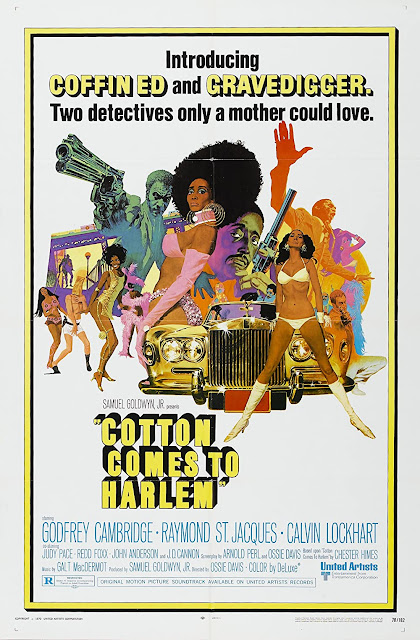and
The Appropriate Tune: 'As Tears Go By' by Marianne Faithfull
This only seemed appropriate, didn’t it? Although Godard isn’t a huge name on this blog, we covered Alphaville a while back and that’s it, he was most certainly a huge name in the world of film at large, easily one of the most influential artists in the medium next to fellow legends like Alfred Hitchcock and Sergei Eisenstein. Generations of filmmakers were inspired by Godard, inspired by those who had been inspired, and so on and on. His death leaves a hole in the fabric of cinema, and we are all the worse for it. So for the very last film of the Long Dark Marathon of the Soul 2022, let’s return to the work of Godard and see what the auteur has in store for us.
Released in 1966, Made in U.S.A. was written and directed by Jean-Luc Godard and produced by Georges de Beauregard through Rome Paris Films, Anouchka Films and S.E.P.I.C., based on the film The Big Sleep directed by Howard Hawks, the novel ‘The Big Sleep’ by Raymond Chandler and ‘The Jugger’ by Donald E. Westlake. Godard muse Anna Karina stars as Paula Nelson, a journalist who has arrived in Paris to investigate the death of her former lover Richard. A heart attack, the official report says, but it becomes clear that Richard wasn’t felled by a coronary. There’s a mystery afoot, one that involves assassinations, political conspiracies, cover ups and Communist Parties, and Paula intends to get to the bottom of it.
Made In U.S.A. is labeled as a thriller, a mystery, and a comedy, and I guess if you were feeling generous you could call it that. There are certainly absurd things that in other films would be considered comedic, like the reveal of Richard’s corpse, but which never cross the border into actual humor. There are elements which could leave the audience thrilled if the film ever had stakes, and the plot does involve a mystery, although the film is so free-wheeling with time and place that the audience struggles to care whether it’s solved or not, if it even was solved by the end. Really Made In U.S.A. is more a movie about people talking that occasionally has something happening on screen, and whether or not you find that interesting depends on if you find talk of French revisionism, the pointlessness of language and circular conversations about whether someone knows something interesting. I don’t, so this whole experience was akin to pulling teeth.
Which isn’t to say that Godard is a bad filmmaker. He’s a very bold filmmaker, and there are things he does in film, the overt symbolism, breaking the 4th wall to have the characters tell the audience what they’re doing, which must have been very striking in ‘66. Hell it’s very bold even today, even after the legion of imitators. It’s just as a film, as a story that was meant to engage me on an emotional level as well as an intellectual one, it dropped the ball. It was white noise in the shape of dialogue, and as time wore on I became less and less interested in moving forward. I’ve complained a lot about movies being a bit too long, but I think Made In U.S.A. proves that even a 90 minute film can drag in the right conditions.
Just so that this isn’t a completely negative post though, I will say that I enjoyed Marianne Faithfull’s cameo. Great singer, and Godard knew enough to just let her sing at one point. Anna Karina was also fairly interesting as a lead actress, and I don’t just say that because of her smoldering sensuality. I believe this was the last of Godard’s film to feature Karina in the lead role, whether she was aging out of the prime movie roles or Godard just wanted a change I don’t know, but it was enough to make me want to check out the rest of her work.
Made In U.S.A. does not get the recommendation. A shitty send-off to a famous director, but I’m in a shitty mood so this is the best we’re going to get. Those interested in a better example of Godard should perhaps check out Alphaville, or one of his other films that probably won’t get reviewed on this blog since they aren’t genre films. Otherwise I’ll see you next year for another 31 films that you’ve probably already seen or don’t care about. In the meantime ebay some candy, dress like a ghost, have sex with someone dressed as a ghost, whatever. Go nuts, it’s a holiday.
Happy Halloween!!!


















